
Adam Wellstead (SS) co-authored a chapter, “Policy Analysis and the Voluntary Sector”, in the Routledge Handbook of Comparative Policy Analysis.
Click here to see the summary

Adam Wellstead (SS) co-authored a chapter, “Policy Analysis and the Voluntary Sector”, in the Routledge Handbook of Comparative Policy Analysis.
Click here to see the summary
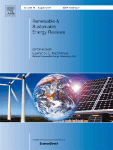 Chelsea Schelly (SS), Joshua Pearce (MSE/ECE) and Emily Prehoda, a PhD student in Social Sciences, have recently published “U.S. Strategic Solar Photovoltaic-powered Microgrid Deployment for Enhanced National Security.”
Chelsea Schelly (SS), Joshua Pearce (MSE/ECE) and Emily Prehoda, a PhD student in Social Sciences, have recently published “U.S. Strategic Solar Photovoltaic-powered Microgrid Deployment for Enhanced National Security.”
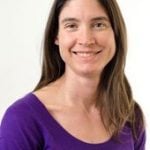
Congratulations to Richelle Winkler for being awarded Michigan Tech’s 2017 Faculty Distinguished Service Award due to her contributions to HEET, Main Street Calumet, the International Associate for Society and Natural Resources, the Keweenaw Land Trust, and Copper Country Recycling. An honor well deserved.

Places, a journal of public scholarship on the built environment, published an article by Nancy Langston (SS) analyzing the Trump administration’s efforts to “dismantle environmental law” and other similar political action, particularly in the Midwest. She writes “far-right politicians in the Midwest have been running their states as experimental laboratories where they refine efforts to undermine science and democracy.” Langston also discusses what can be done about this.
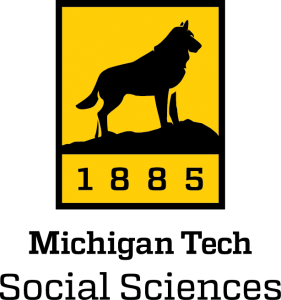 Congratulations to Richelle Winkler, Sarah Scarlett, Mark Rouleau, and Don Lafreniere!
Congratulations to Richelle Winkler, Sarah Scarlett, Mark Rouleau, and Don Lafreniere!
The Vice President for Research Office announced the 2017 REF awards and thanked the volunteer review committees, as well as the deans and department chairs, for their time spent on this important internal research award process.
Infrastructure Enhancement (IE) Grants
Dan Seguin (MSE/IMP)
Raymond Shaw (Bio Sci/EPSSI)
Kent Cyr (VPA)
Amy Marcarelli (SS/GLRC)
Portage Health Foundation (PHF) Infrastructure Enhancement (IE) Grants
Steve Elmer (KIP/LSTI)
Scholarship and Creativity Grants (SCG)
Emanuel Oliveira (SBE)
Josh Loar (VPA)
Joel Neves (VPA)
Richelle Winkler (SS/GLRC)
Sarah Scarlet (SS)
Sarah Bell (HU)
Carlos Amador (HU)
Mark Rouleau (SS)
Research Seed (RS) Grants
Daisuke Minakata (CEE)
Radwin Askari (GME/EPSSI)
Erika Hersch-Green (Bio Sci/ESC)
Kelly Steelman (CLS)
Don Lafreniere (SS/GLRC)
Kathryn Perrine (Chem)
Curtis Edson (SFRES)
Portage Health Foundation (PHF) Research Seed (RS) Grants
Momoko Tajiri (Chem)
Xiaohu Xia (Chem)
Kevin Trewartha (CLS)
Kelly Kamm (KIP)
Portage Health Foundation (PHF) Mid-Career (MC)
CK Choi (MEEM)
Megan Frost (Bio Med)
Jeremy Goldman (Bio Med)
Langrong Bi (Chem)
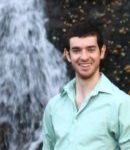
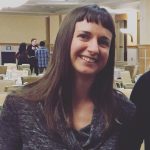
by Student Activities
The 23rd Annual Student Leadership Awards were held Friday in the Memorial Union Ballroom.
President’s Award for Leadership was presented to Stuart Liburd, Jr., while Tyler Leverton was given the Provost’s Award for Scholarship.
The Vice President’s for Student Affairs Award for Service was won by Erin Richie.
The other individual and organization award winners were:
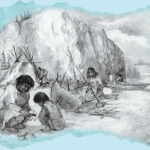
The Chronicle Journal of Thunder Bay, Ontario, published an article examining whether ancient toolmakers in our area were male or female. The article quoted Susan Martin (SS), who said tools unearthed in Keweenaw County could well have been made by women.

Steve Walton co-edited and authored a chapter in the book “Mathematical Practitioners and the Transformation of Natural Knowledge in Early Modern Europe” published by Springer.
Abstract: “The book argues that we can only understand transformations of nature studies in the Scientific Revolution if we take seriously the interaction between practitioners (those who know by doing) and scholars (those who know by thinking). These are not in opposition, however. Theory and practice are end points on a continuum, with some participants interested only in the practical, others only in the theoretical, and most in the murky intellectual and material world in between. It is this borderland where influence, appropriation, and collaboration have the potential to lead to new methods, new subjects of enquiry, and new social structures of natural philosophy and science.”

Richelle Winkler co-authored a research brief, Moving to Diversity, with Kenneth Johnson from the University of New Hamphire. Using new data and techniques, they find that net migration between counties increased racial diversity in each of the last two decades. The full report can be found here: https://carsey.unh.edu/publication/moving-diversity.
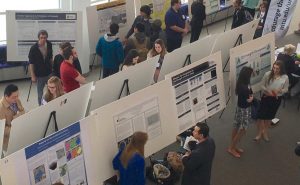 Joe Iwanicki – Anthropology – Social Sciences
Joe Iwanicki – Anthropology – Social Sciences
Iwanicki’s research, The Archaeology of Trade: A Study of a Twentieth Century Logging Camp, was presented at Michigan Tech’s 2017 Undergraduate Research Symposium this past week. With the assistance of LouAnn Wurst, Iwanicki looked at archaeological data from a 1900’s lumber camp in the Munising Michigan area called Coalwood. The data consists of artifacts that allow for investigation of trade and commodity flows. The archaeological record is combined with GIS to map and recreate the trade networks of the past, something rarely explored by archaeologists.
The Undergraduate Research Symposium highlights the amazing cutting-edge research being conducted on Michigan Tech’s campus by some of our best and brightest undergraduate students.
The students showcasing their work today have spent a significant portion of the past year working alongside Michigan Tech faculty and graduate students to explore, discover and create new knowledge. They’ve spent long hours in the lab or out in the field designing experiments, gathering data, creating new models and testing hypotheses. They’ve applied their classroom knowledge in new and sometimes unexpected ways, and developed new skills that will propel them forward in their careers.